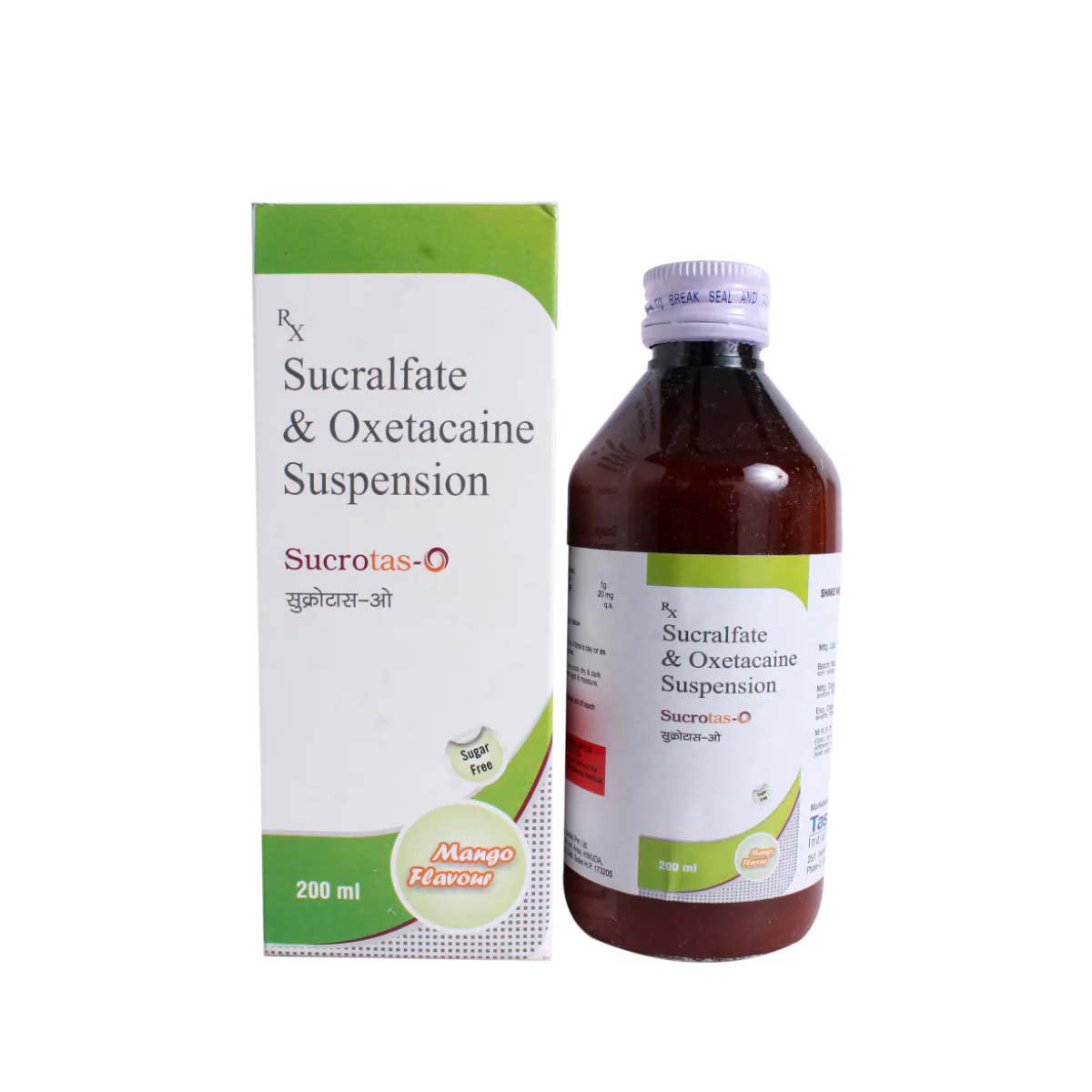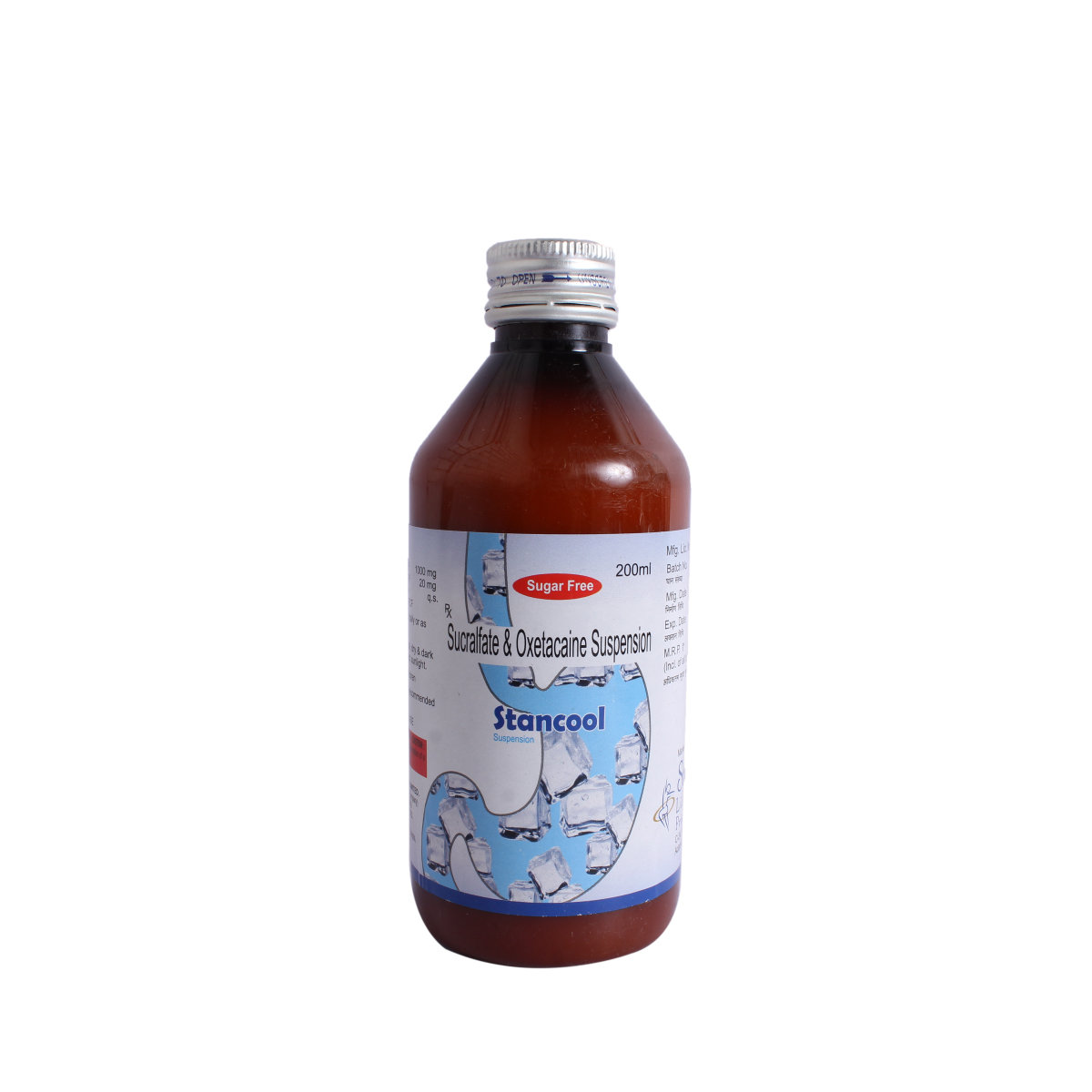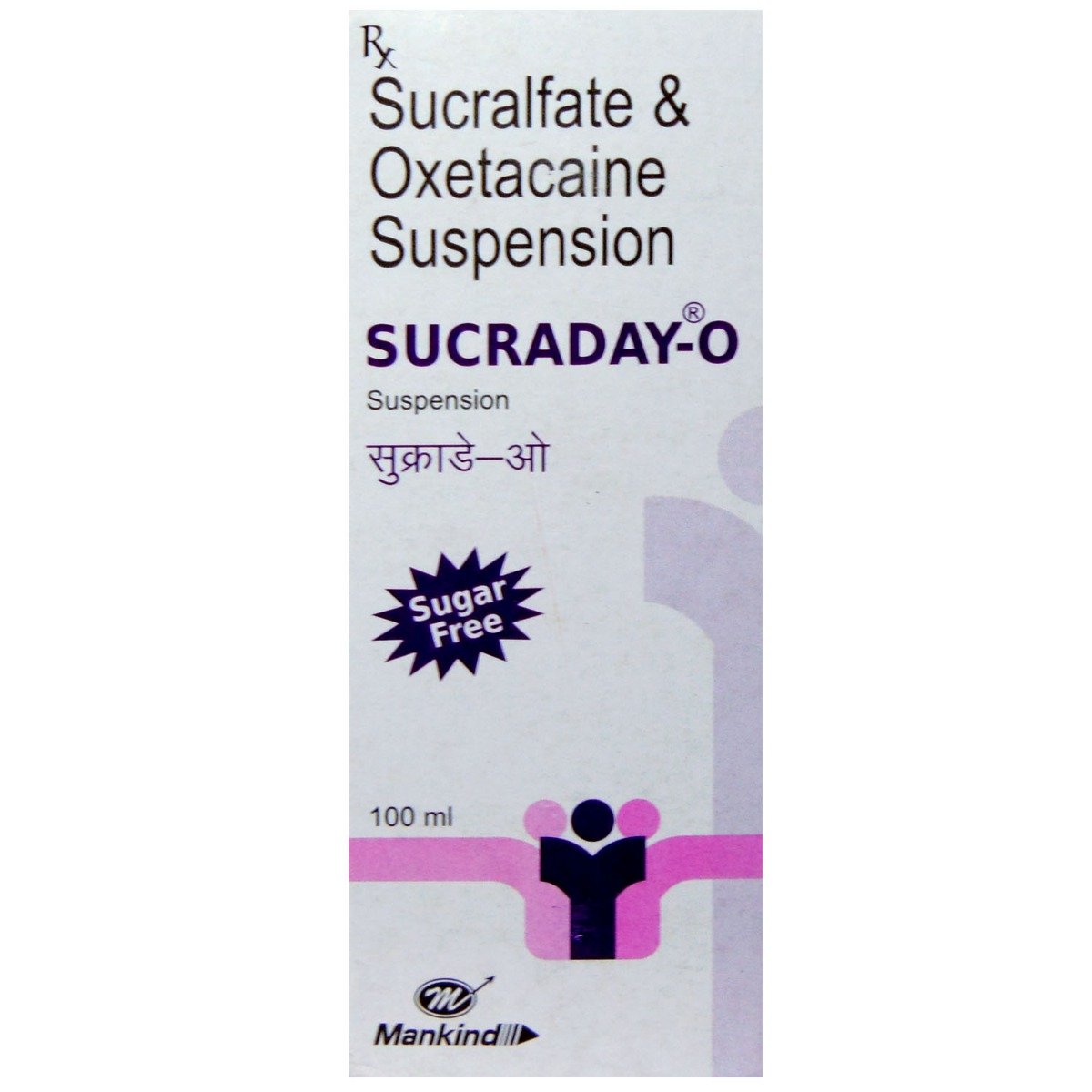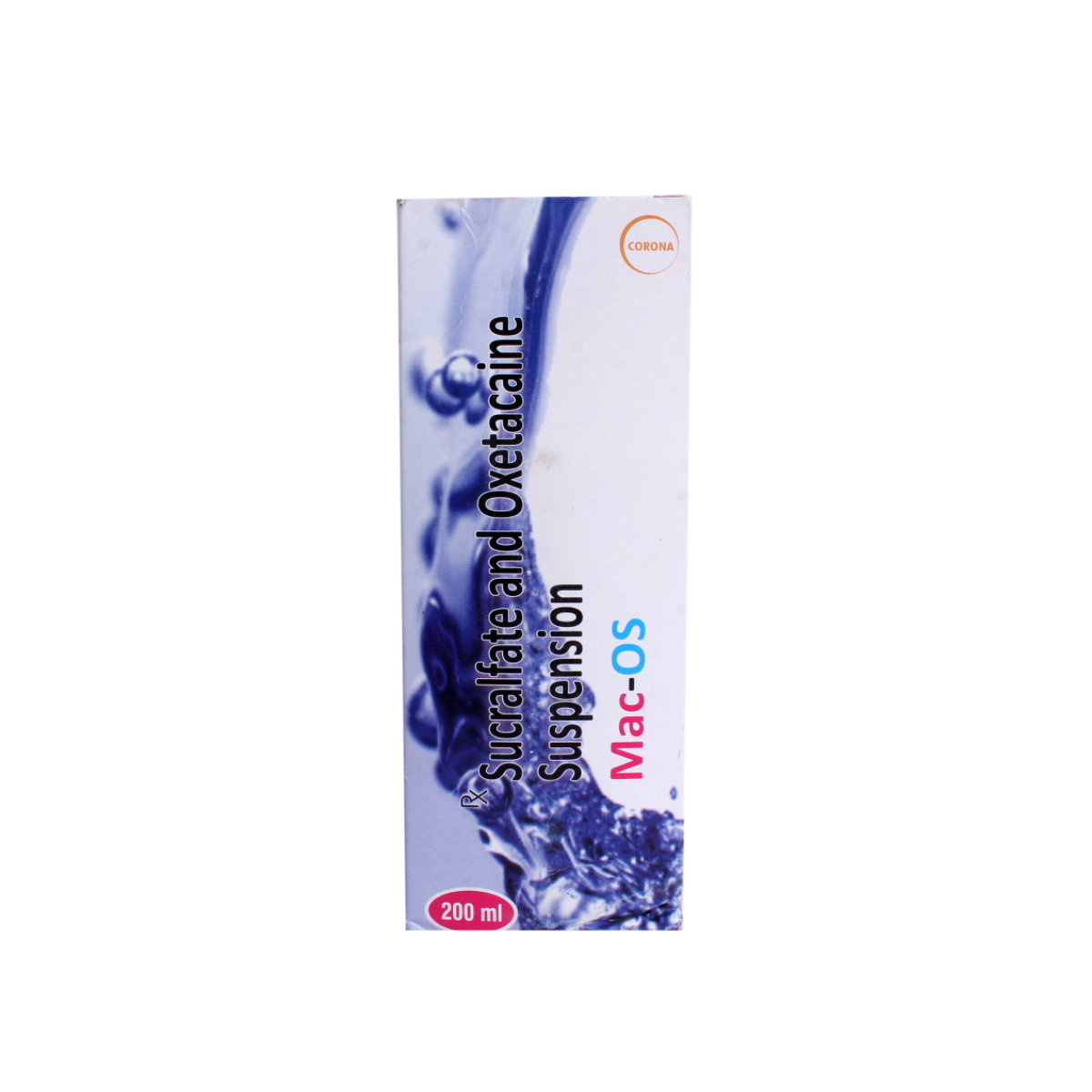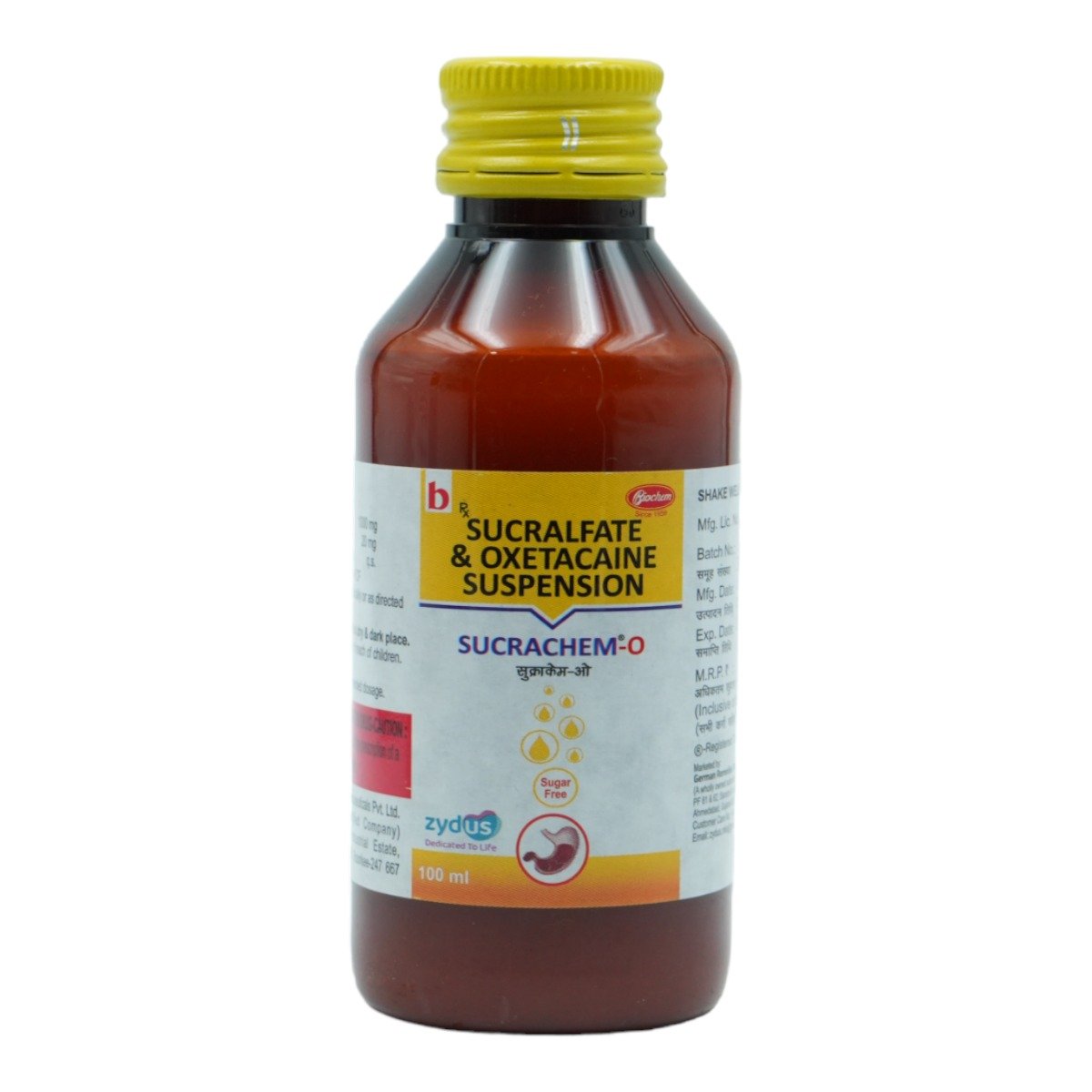Stancool Suspension 100 ml





MRP ₹177
(Inclusive of all Taxes)
₹26.6 Cashback (15%)
Selected Pack Size:100 ml
100 ml ₹159.3
(₹1.59 per ml)
In Stock
200 ml ₹243
(₹1.22 per ml)
In Stock
Provide Delivery Location
Online payment accepted
 Prescription drug
Prescription drugWhats That
Composition :
Manufacturer/Marketer :
Consume Type :
Expires on or after :
Return Policy :
About Stancool Suspension
Stancool Suspension belongs to a group of medicine called 'ulcer protectants' primarily used to treat peptic ulcers or gastrointestinal ulcers. It also treats hyperacidity, heartburn, indigestion, and gastritis (inflammation of the stomach). The stomach is usually protected from acid by a mucous layer. In some cases, due to excess acid production, the mucous layer gets eroded, which leads to complications like acidity and heartburn. A peptic ulcer is a sore on the stomach's lining or the first part of the small intestine (duodenum). Ulcers or sores of the stomach region are called gastric ulcers, while the duodenum ulcer is known as a duodenal ulcer.
Stancool Suspension is a combination of two medicines: Sucralfate and Oxetacaine. Sucralfate is a gastrointestinal protectant that works by forming a protective barrier or coat over the ulcer so that digestive enzymes, acid and bile salts cannot further irritate the lining of the stomach duodenum. This protects the ulcer from the acid of the stomach, allowing it to heal. Besides this, Oxetacaine is a local anaesthetic that exerts a numbing effect, thereby providing relief from pain due to ulcers or acidic injury in the stomach.
It is better to take Stancool Suspension an hour before a meal or without a meal for its best results. Your doctor will advise you on how often you take Stancool Suspension based on your medical condition. Some people may experience common side effects like constipation, dizziness, sleepiness, dry mouth, blurred vision, and diarrhoea. Most of these side effects of Stancool Suspension do not require medical attention and gradually resolve over time. However, if the side effects persist or worsen, please consult your doctor.
If you are known to be allergic to Stancool Suspension or active and inactive ingredients present on it, please tell your doctor. If you are pregnant or breastfeeding, it is advised to consult a doctor before using Stancool Suspension . Stancool Suspension should not be given to children as safety has not been established. Try not to stop taking Stancool Suspension of your own. Stopping a sudden intake of Stancool Suspension will not influence the frequency or severity of future ulceration. Avoid taking aluminium and magnesium-containing antacids with Stancool Suspension . Aluminium-containing antacids and Stancool Suspension could lead to constipation and intestinal obstruction, whereas magnesium-containing antacids might cause diarrhoea. Avoid consuming alcohol along with Stancool Suspension as it could lead to increased acidity.
Uses of Stancool Suspension
Directions for Use
Key Benefits
Stancool Suspension belongs to a group of anti-ulcerants used to treat acidity, heartburn, gas and stomach ulcers. Stancool Suspension is a combination of two medicines: Sucralfate (anti-ulcer) and Oxetacaine (Local anaesthetic). Sucralfate works by forming a protective barrier or coat over the ulcer to pepsin and bile and inhibiting gastric acid diffusion. This protects the ulcer from the acid of the stomach, allowing it to heal. It exhibits a cytoprotective effect and forms a viscous, adhesive barrier on the intact intestinal mucosa and stomach surface. It also stimulates the synthesis and release of gastric mucosal prostaglandins and bicarbonate and the epidermal growth factor that stimulates healing and formation of new healthy skin. On the other hand, Oxetacaine exerts a numbing effect, thereby provides relief from pain due to ulcers or acidic injury in the stomach. It does not lose its activity even in strongly acidic conditions and provides prolonged anaesthetic action.
Storage
- Inform your doctor about your constipation symptoms. They may adjust your medication or advise alternative treatments.
- Stay hydrated by drinking sufficient of water (at least 8-10 glasses a day) to help soften stool and promote bowel movements.
- Increase fibre intake by eating foods high in fibre, such as fruits, whole grains, vegetables and legumes, to help bulk up the stool.
- Establish a bowel routine by trying to go to the bathroom at the same time each day to train your bowels.
- Engaging in regular exercise, like walking or yoga, can support in bowel movement stimulation.
- Consult your doctor if constipation persists, and discuss alternative treatments or adjustments to your medication.
- Hydrate your body: Drink enough water to prevent dehydration and headaches.
- Calm Your Mind: Deep breathing and meditation can help you relax and relieve stress.
- Rest and Recharge: Sleep for 7-8 hours to reduce headache triggers.
- Take rest: lie down in a quiet, dark environment.
- Cold or warm compresses can help reduce tension.
- Stay Upright: Maintain good posture to keep symptoms from getting worse.
- To treat headaches naturally, try acupuncture or massage therapy.
- Over-the-counter pain relievers include acetaminophen and ibuprofen.
- Prescription Assistance: Speak with your doctor about more substantial drug alternatives.
- Severe Headaches: Seek emergency medical assistance for sudden, severe headaches.
- Frequent Headaches: If you get reoccurring headaches, consult your doctor.
- Headaches with Symptoms: Seek medical attention if your headaches include fever, disorientation, or weakness.
Drug Warnings
You should avoid taking Stancool Suspension if you are allergic to Stancool Suspension or other ingredients present in it. Inform your doctor before taking Stancool Suspension if you have a history of appendicitis, blockage of the bowel, rectal bleeding, kidney problems, low-magnesium diet, or if you have undergone recent bowel surgery. Caution is required before giving Stancool Suspension to elderly patients. Sucralfate in Stancool Suspension contains aluminium, which is normally removed by your kidney. Therefore, older adults and people who have kidney problems may be at greater risk for developing high aluminium levels while using this drug with other products that contain aluminium (e.g. antacids). Do not take Stancool Suspension if you are pregnant or breastfeeding unless prescribed by the doctor. The safety and effectiveness in children are not established, please consult your doctor before giving them Stancool Suspension . Avoid consuming alcohol along with Stancool Suspension as it could lead to increased acidity.
Drug-Drug Interactions
Drug-Drug Interactions
Login/Sign Up
Co-administration of Stancool Suspension 100 ml together with Digoxin may decrease the effects of Digoxin.
How to manage the interaction:
If you are supposed to take Digoxin and Stancool Suspension 100 ml together, your doctor may adjust the dose to safely use both medications. Do not discontinue the medication without consulting a doctor.
Coadministration of Paricalcitol with sulfasalazine may increase the risk or severity of kidney problems.
How to manage the interaction:
There may be a possibility of interaction between Paricalcitol and Stancool Suspension 100 ml, but it can be taken if prescribed by a doctor. Do not discontinue any medications without consulting a doctor.
Coadministration of dolutegravir with Stancool Suspension 100 ml can lead to decreased levels and effects of Dolutegravir.
How to manage the interaction:
Although taking Dolutegravir and Stancool Suspension 100 ml together can possibly result in an interaction, they can be taken together if prescribed by your doctor. It is advised to take dolutegravir either two hours before or six hours after taking a dose of Stancool Suspension 100 ml. Do not discontinue any medications without consulting a doctor.
Taking Cholecalciferol together with Stancool Suspension 100 ml may increase the risk or severity of kidney problems.
How to manage the interaction:
There may be a possibility of interaction between Cholecalciferol and Stancool Suspension 100 ml, but it can be taken if prescribed by a doctor. Do not discontinue any medications without consulting a doctor.
Coadministration of Doxercalciferol with sulfasalazine can increase the risk or severity of kidney problems.
How to manage the interaction:
There may be a possibility of interaction between Doxercalciferol and Stancool Suspension 100 ml, but it can be taken if prescribed by a doctor. Do not discontinue any medications without consulting a doctor.
Stancool Suspension 100 ml can affect blood glucose regulation and reduce the efficiency of other diabetic drugs, such as tirzepatide. Take particular attention to your blood sugar levels. Your diabetes medications may need to be adjusted in dosage both during and after Stancool Suspension 100 ml treatment.
How to manage the interaction:
Monitor your blood sugar levels closely. You may need a dose adjustment of your diabetic medications during and after treatment with Stancool Suspension 100 ml.
Drug-Food Interactions
Drug-Food Interactions
Login/Sign Up
Diet & Lifestyle Advise
- Avoid intake of acid or heartburn triggering foods or drinks like peppermint, chocolate, onions, caffeinated beverages, citrus fruits or juices, tomatoes, and high-fat and spicy foods.
- Eating five or six smaller meals throughout the day rather than three large meals. It can help reduce the production of stomach acid.
- Avoid taking alcohol and smoking cigarettes and red meat. It increases the production of stomach acid and makes symptoms worse. It can also cause erosion of the stomach lining.
- Include the high fiber-containing foods, leafy green veggies (kale, spinach), green tea in your meal. Fermented dairy products like miso, sauerkraut, and kimchi contain probiotics which help in the prevention of excess acid production.
- Cranberry juice can be beneficial in peptic ulcer and H. pylori infections.
Side Effects of Stancool Suspension
- Constipation
- Dizziness
- Sleepiness
- Dry Mouth
- Nausea
Habit Forming
Therapeutic Class
All Substitutes & Brand Comparisons
RX
Suco O Elaichi Suspension 200 ml
Sanatra Healthcare Ltd
₹210.5
(₹0.95/ 1ml)
40% CHEAPERRX
Sucratab-O Suspension 200 ml
Bioceutics Inc
₹225
(₹1.01/ 1ml)
36% CHEAPERRX
Sucragel-O Sugar Free Suspension 200 ml
Sain Medicaments Pvt Ltd
₹225
(₹1.01/ 1ml)
36% CHEAPER
Product Substitutes
Author Details
We provide you with authentic, trustworthy and relevant information
Drug-Diseases Interactions
Drug-Diseases Interactions
Login/Sign Up
FAQs
Stancool Suspension is a combination of two medicines: Sucralfate and Oxetacaine. Sucralfate is an antiulcers covers the damaged ulcer tissue in the stomach and protects it from acid or injury to facilitate healing. Oxetacaine is a local anesthetic that shows numbing effect provides fast relief from pain caused due to ulcers or acidic injury in the stomach.
If you miss a dose of Stancool Suspension , take the missed dose as soon as you remember it. However, if it's almost time for the next dose, do not take a double dose to make up for a missed one.
Do not take Stancool Suspension for longer durations unless prescribed by the doctor. Talk to your doctor if you do not feel better even after taking Stancool Suspension for a few days.
Do not stop taking Stancool Suspension without consulting your doctor. The stomach ulcer and duodenal ulcer tends to be recurrent disease. If you stop taking Stancool Suspension , it will not influence the frequency or severity of future ulceration.
Do not take aspirin and ibuprofen as a pain killer while taking Stancool Suspension unless your doctor says it to take. These pain killers increase the secretion of stomach acid and exaggerate gastrointestinal bleeding. Besides this, avoid acid-containing food/drinks, coffee, tea, carbonated drinks and vegetables like lemon, tomato etc.
Drug-Drug Interactions Checker List
- ALUMINIUM HYDROXIDE
- MAGNESIUM HYDROXIDE
- DOLUTEGRAVIR
- DOXERCALCIFEROL
- PARICALCITOL
- CIPROFLOXACIN
- GEMIFLOXACIN
- LEVOFLOXACIN
- ACARBOSE
- METFORMIN
- GLIPIZIDE
- GLIMEPIRIDE
- GLYBURIDE
- WARFARIN
Special Advise
- If your condition does not improve even after taking Stancool Suspension for 4-5 weeks, please consult your doctor. Do not take Stancool Suspension for more than 8 weeks.
- Sucralfate in Stancool Suspension contains aluminium, so if you are a kidney patient, let your doctor know about this before taking Stancool Suspension .
Disease/Condition Glossary
Gastrointestinal ulcer: The stomach is usually protected from acid by a mucous layer. In some cases, due to excess acid production, the mucous layer gets eroded, which leads to complications like acidity. Due to this, acid frequently flows back into the food pipe (oesophagus). This backflow (acid reflux) irritates the food pipe and causes heartburn. Symptoms include heartburn, a sour or bitter taste in the mouth, and difficulty swallowing. Indigestion is the feeling of fullness. It occurs due to slow gastric emptying. Symptoms include stomach pain, bloating, heartburn, nausea and vomiting. A peptic ulcer is a sore on the stomach's lining or the first part of the small intestine (duodenum). Ulcers or sores of the stomach region are called gastric ulcers, while the duodenum ulcer is known as a duodenal ulcer.

Have a query?
Buy best Gastro Enterology products by
Abbott India Ltd
Sun Pharmaceutical Industries Ltd
Alkem Laboratories Ltd
Cipla Ltd
Torrent Pharmaceuticals Ltd
Intas Pharmaceuticals Ltd
Mankind Pharma Pvt Ltd
Lupin Ltd
Dr Reddy's Laboratories Ltd
Aristo Pharmaceuticals Pvt Ltd
Alembic Pharmaceuticals Ltd
Wallace Pharmaceuticals Pvt Ltd
La Renon Healthcare Pvt Ltd
Leeford Healthcare Ltd
Macleods Pharmaceuticals Ltd
J B Chemicals & Pharmaceuticals Ltd
Zydus Healthcare Ltd
Micro Labs Ltd
Zydus Cadila
Fourrts India Laboratories Pvt Ltd
Morepen Laboratories Ltd
Zuventus Healthcare Ltd
FDC Ltd
Eris Life Sciences Ltd
Cadila Pharmaceuticals Ltd
Medishri Healthcare Pvt Ltd
Alniche Life Sciences Pvt Ltd
Medley Pharmaceuticals Ltd
Tas Med India Pvt Ltd
Signova Pharma
Tablets India Ltd
Elder Pharmaceuticals Ltd
Wockhardt Ltd
Emcure Pharmaceuticals Ltd
Sanatra Healthcare Ltd
Glenmark Pharmaceuticals Ltd
Blue Cross Laboratories Pvt Ltd
East West Pharma India Pvt Ltd
Hetero Drugs Ltd
Indoco Remedies Ltd
Vasu Organics Pvt Ltd
Biological E Ltd
Primus Remedies Pvt Ltd
Akumentis Healthcare Ltd
Corona Remedies Pvt Ltd
Pfizer Ltd
Albert David Ltd
DR Johns Lab Pharma Pvt Ltd
Ajanta Pharma Ltd
Cadila Healthcare Ltd
Ipca Laboratories Ltd
Ordain Health Care Global Pvt Ltd
Systopic Laboratories Pvt Ltd
Ozone Pharmaceuticals Ltd
Foregen Healthcare Ltd
Medgen Drugs And Laboratories Pvt Ltd
Panacea Biotec Ltd
Samarth Life Sciences Pvt Ltd
Shine Pharmaceuticals Ltd
Adonis Laboratories Pvt Ltd
Dey's Medical Stores (Mfg) Ltd
Eskag Pharma Pvt Ltd
Hetero Healthcare Pvt Ltd
Indchemie Health Specialities Pvt Ltd
Meyer Organics Pvt Ltd
RPG Life Sciences Ltd
Troikaa Pharmaceuticals Ltd
Biochem Pharmaceutical Industries Ltd
Shreya Life Sciences Pvt Ltd
Sinsan Pharmaceuticals Pvt Ltd
3M India Ltd
Chemo Healthcare Pvt Ltd
Levin Life Sciences Pvt Ltd
Meridian Enterprises Pvt Ltd
Overseas Health Care Pvt Ltd
Saf Fermion Ltd
Sanzyme Pvt Ltd
Steris Healthcare
USV Pvt Ltd
Seagull Pharmaceutical Pvt Ltd
Votary Laboratories (India) Ltd
Win Medicare Ltd
Yuventis Pharmaceuticals
Aar Ess Remedies Pvt Ltd
Caplet India Pvt Ltd
Piramal Enterprises Ltd
Sanofi India Ltd
Cnx Health Care Pvt Ltd
Galpha Laboratories Ltd
Intra Labs India Pvt Ltd
Kinesis Pharmaceuticals Pvt Ltd
Msn Laboratories Pvt Ltd
Olcare Laboratories Pvt Ltd
Rapross Pharmaceuticals Pvt Ltd
Ronyd Healthcare Pvt Ltd
Saffron Therapeutics Pvt Ltd
Solariz Healthcare Pvt Ltd
Syndicate Life Sciences Pvt Ltd
Aurz Pharmaceutical Pvt Ltd
Biophar Lifesciences Pvt Ltd
Alcohol
Safe if prescribed
Drinking alcohol with Stancool Suspension may cause dehydration and elevate the level of stomach acid thereby decreasing Stancool Suspension efficacy.
Pregnancy
Consult your doctor
Stancool Suspension is a pregnancy category B drug. It should not be taken until prescribed. Your doctor will weigh the benefits and any potential risks before prescribing it to you. Please consult your doctor.
Breast Feeding
Consult your doctor
There is limited data on how Stancool Suspension affects breastfeeding. Please consult your doctor, before taking Stancool Suspension . your doctor will weigh the benefits and any potential risks before prescribing it to you.
Driving
Safe if prescribed
Stancool Suspension decrease alertness, affect your vision, or make you feel sleepy and dizzy. Do not drive if these symptoms occur.
Liver
Consult your doctor
Stancool Suspension to be taken with caution if you had or have a history of liver disease/conditions. The dose may have to be adjusted by your doctor.
Kidney
Consult your doctor
Consult your doctor before taking Stancool Suspension if you have kidney impairment or any concerns regarding this. Your doctor will weigh the benefits and any potential risks before prescribing it to you. Sucralfate in Stancool Suspension contains aluminum, which is normally excreted by your kidney. Therefore, people who have kidney problems may be at greater risk for developing high aluminum toxicity in the body. The dose adjustment is necessary for patients with kidney disease.
Children
Safe if prescribed
The safety and effectiveness of Stancool Suspension in children has not been established. Please consult your doctor before giving Stancool Suspension to children.



